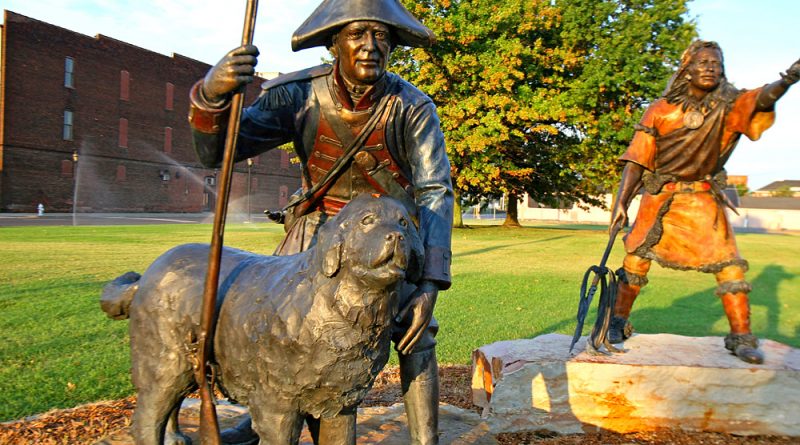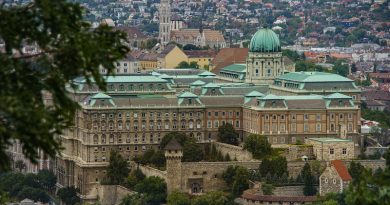Lewis & Clark’s Native American Trail
In 1803, two young army officers set off west at the behest of President Jefferson to explore the newly acquired territory of Louisiana & find a practical transportation link between this region & the ‘Oregon Country’ territory claimed by the US following the discovery of the mouth of the Columbia River in 1792.
For years, Thomas Jefferson read accounts about the ventures of various explorers in the western frontier, and consequently had a long-held interest in further exploring this mostly unknown region of the continent. In the 1780s, while Minister to France, Jefferson met John Ledyard in Paris and they discussed a possible trip to the Pacific Northwest. Jefferson had also read Captain James Cook’s A Voyage to the Pacific Ocean (London, 1784), an account of Cook’s third voyage, and Le Page du Pratz’s The History of Louisiana (London, 1763), all of which greatly influenced his decision to send an expedition. Like Captain Cook, he wished to discover a practical route through the Northwest to the Pacific coast.
Not only was the territory to be mapped but also properly researched; with records to be made of everything from animals & plants to conducting diplomatic councils with Indian tribes.
The Spanish, who had claimed the south and west of the US as part of New Spain, were fearful of American encroachment on or near their lands and dispatched soldiers from Santa Fe to intersect the expedition but it was unsuccessful.
President Thomas Jefferson commissioned the expedition shortly after the Louisiana Purchase from France in 1803 ,to explore and to map the newly acquired territory, to find a practical route across the western half of the continent, and to establish an American presence in this territory before European powers attempted to establish claims in the region.
The campaign’s secondary objectives were scientific and economic: to study the area’s plants, animal life, and geography, and to establish trade with local Native American tribes.
The expedition had numerous wild animal encounters but only lost one member of the 45 man party. They enjoyed friendly relations with some tribes including the Nez Perce who helped save them after the crossing the Continental Divide on the outward journey.
Clark had controversially taken his slave York with him who was critical to the mission’s success as were various fur traders and the Indians the party met.
The expedition returned to St. Louis to report its findings to Jefferson, with maps, sketches, and journals in hand.
Based on their knowledge and meetings with Native American tribes, Both Lewis and Clark were both subsequently promoted to run new Indian affairs departments as America expanded west into its newly acquired territory .
Lewis died young of an apparent gunshot suicide but in suspicious circumstances. Clark subsequently worked for several other Presidents including Monroe, Maddison and the expansionist Jackson.
As one responsible for Indian affairs Clark oversaw over the next 30 years vast amounts of Indian land transferred to the US through treaties.
Though Clark tried to maintain peaceful relations with indigenous nations and negotiated peace treaties, he was in charge of implementing President Andrew Jackson’s Indian removal policy. He managed retaliation against Black Hawk and those allied with him in the Black Hawk War, when hostilities arose between them and the Americans. Clark issued “an extermination order”, which he gave to Lewis Cass, a man who played a central role in Jackson’s removal policy.
Clark believed in the Jeffersonian ideology in which assimilation would be the best course of action for Native Americans. However, in the end, relocation of the Indians from their native lands became the government’s primary goal, and even the assimilated Five Civilized Tribes were moved by force with the threat of military action.
Clark’s government position on Native American affairs kept him at the forefront of countless relocations. He expressed sympathy for those uprooted tribes and promoted their interests as he understood them, nevertheless, he agreed with and implemented the policy of Indian removal, negotiating 37, or one-tenth, of all ratified treaties between American Indians and the United States. Over the course of his career, millions of acres passed from Indian to U.S. ownership through Clark’s hand.
Lewis and Clark Trail
The Lewis and Clark National Historic Trail winds nearly 4,900 miles through the homelands of more than 60 Tribal nations. It follows the historic outbound and inbound routes of the Lewis and Clark Expedition of 1803-1806 from Pittsburgh, Pennsylvania to the Pacific Ocean. Follow the trail to find the people, places, and stories that make up the complex legacy of the expedition.
The Trail connects 16 states (Pennsylvania, Ohio, West Virginia, Kentucky, Indiana, Illinois, Missouri, Kansas, Nebraska, Iowa, South Dakota, North Dakota, Montana, Idaho, Washington, and Oregon) and many tribal lands. It is administered by the National Park Service.
There are many sites to visit on the trail . In the Pacific North West you can trace the last part of the original expedition along the Columbia River which Lewis and Clark paddled in canoes. At the end there’s the Lewis & Clark Interpretive Centre. The expedition constructed Fort Clatsop where they spent the winter before returning.
In the summer you can view tasks undertaken by the party including canoe building, woodworking, candle making, and sewing buck skin.




